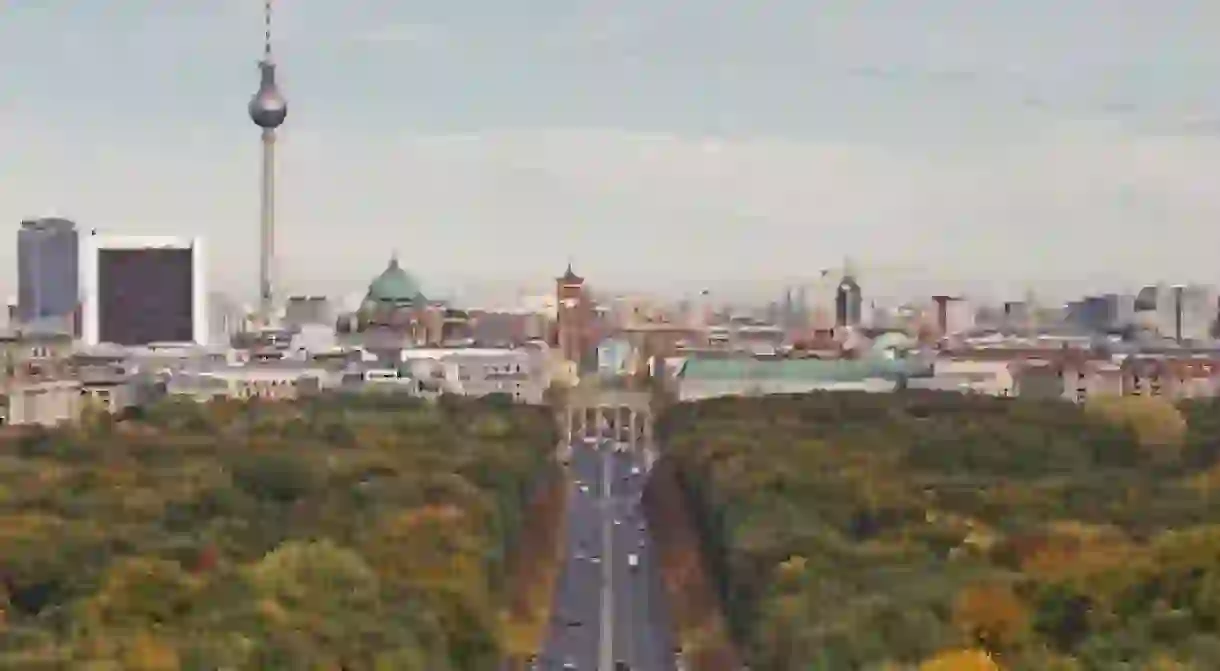Tiergarten: Berlin's Largest Inner-City Park

Tiergarten, or Großer Tiergarten in German, is the most popular and largest inner-city park in Berlin and covers 210 hectares (520 acres) of area. The literal meaning of the word ‘Tiergarten’ is animal garden or zoo. But here, it has nothing to do with animals; rather, it is a great place to have a picnic (spots are free), go jogging or just have a nice evening stroll surrounded by historical buildings and the flowing water of the Spree all around it.

Berliners are fond of nature and use open areas for sports, football, grilling or family picnics on Sundays, especially in summer. The main road that leads towards Tiergarten is the Straße des 17. Juni, and in the middle of the park is the remarkable Siegessäule victory column, with the Brandenburg Gate at the east and the Zoological Garden on the southwestern side of the park. A large playground is located on the southeastern corner near Potsdamer Platz. Other significant buildings around the garden include Bellevue Palace, Congress Hall, ‘Kanzleramt’ (Chancellor’s Office), Bundestag and the Soviet War Memorial.
Origin and Development: An Overview
Tiergarten has gone through a long history of development, renovation, enhancement, destruction and reconstruction to get to its present shape. Tiergarten was established as a private hunting place for the King Frederick Wilhelm I (1657-1713) in what was then outside the Berlin city limits. Friedrich II (1712-1786) was not fond of hunting, so he decided to open up the park to the public. The king also employed George Wenzeslaus von Knobelsdorff (1742) to redesign the garden according to Baroque style. But after almost a century, Peter Joseph Lenné was assigned to shape the garden in the fashion of an English garden.
Many massive developments were made during 1849, with the addition of the Siegessäule victory column that is still standing in Großer Stern today. Tiergarten was decorated with statutes depicting notable kings and queens of Prussia and also statutes of animals. The famous statues are of Queen Louise, Frederick William III, Johann Wolfgang von Goethe, Gotthold Ephraim Lessing, Theodor Fontane, Richard Wagner, Albert Lortzing and the Beethoven-Haydn-Mozart Memorial.

Tiergarten faced drastic damage during World War II; many statutes were demolished and partially damaged by the bombing. Trees were cut down for fuel and used as firewood to fight the cold weather of Berlin. British troops converted the park into harvest land, and the Soviet army built Soviet memorials in memory of soldiers who lost their lives during the war.
Restoration after World War II
After the end of World War II, the local government executed the plan to restore the Tiergarten, so a large number of young trees were brought in from all over the Germany to plant. Tiergarten was again decorated with new pathways, new plants, trees and bushes, and the alteration process continued even after the fall of the Berlin Wall. New buildings were added around the park like the Congress Hall and the German Chancellery office.

During the winter months in Berlin, there are less outdoor activities in Tiergarten, but it remains an equally popular attraction with local visitors and tourists for cycling, jogging, a nice walk or to kick a football. BBQ is prohibited here due to safety concerns and cleanliness. When the weather is cold enough, Tiergarten has a small lake that converts into a skating rink.
By Amna Ashraf













